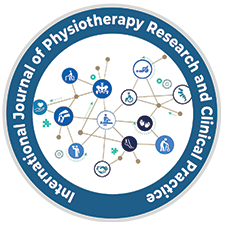


International Journal of Physiotherapy Research and Clinical Practice
DOI: 10.54839/ijprcp.v2i4.23.4
Year: 2023, Volume: 2, Issue: 4, Pages: 6-9
Original Article
Huba Khamis Rashid1, Zeeshan Ali2, Harini Mallikarjuna3,*
1Assistant Lecturer, Assistant Coordinator Unit of Clinical Medicine, School of Health and Medical Sciences, State University of Zanzibar, Zanzibar, Tanzania
2Assistant Professor, Krupanidhi College of Physiotherapy, Bengaluru, 560035, Karnataka, India
3Student, Krupanidhi College of Physiotherapy, Bengaluru, 560035, Karnataka, India
*Corresponding Author
Email: [email protected]
Young adolescent people use mobile phones for various purposes and use them for min 6 – max 10 hours a day. The sitting posture during mobile use in people affects the neck muscles so the extension and lateral rotation of normal range of motion are restricted, which leads to pain and stiffness in the neck. The objective of the present study was to find the effect of mobile phone use on the cervical range of motion. A total of 70 People who met the inclusion criteria were included in this study Neck pain was assessed using the VAS scale. Range of motion was assessed using the goniometer and the total duration of mobile usage in a day was also assessed for this study. The result from the present study showed that the increase in the flexion Range of motion was more than normal and a decrease in the ROM than normal for extension and lateral rotation to the left side of the cervical spine. The mean values of the VAS scoring showed that there was a mild increase in pain in mobile users. The person’s correlation showed that there was a significant relation between the duration of mobile use and an increase in cervical ROM and a decrease in cervical extension and lateral rotation. Prolonged use of mobile affects the cervical ROM and leads to pain and stiffness so limiting the duration of use of mobile will reduce such risk factors and its complications.
Keywords: Mobile Phone Usage, Cervical Range of Motion, Musculoskeletal Complications, Adolescent Well-being
© 2023 Published by Krupanidhi College of Physiotherapy. This is an open-access article under the CC BY license (https://creativecommons.org/licenses/by/4.0/)
Subscribe now for latest articles and news.